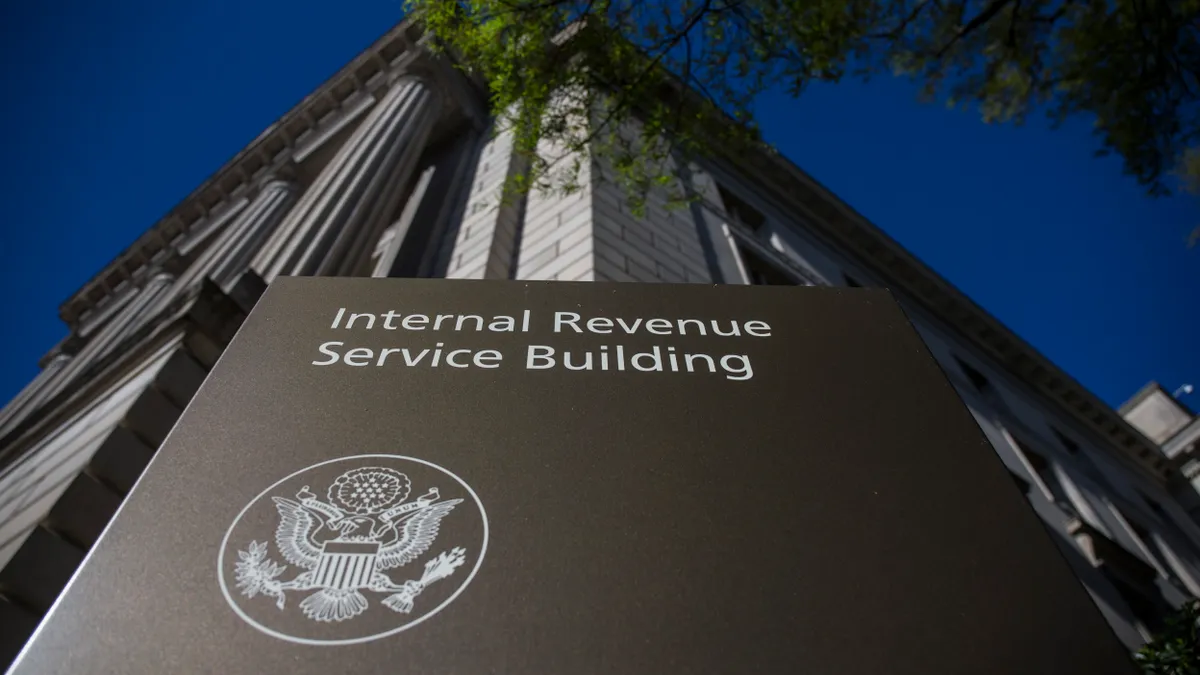Dive Brief:
- The Internal Revenue Service will use new enforcement funds to collect $561 billion more in revenue than previously estimated by upgrading technology, streamlining services and intensifying efforts to make big corporations and wealthy taxpayers pay what they owe, the Treasury Department said.
- Prior IRS estimates for 2024 through 2034 only focused on the payoff from increasing staff with funding provided by the Inflation Reduction Act, rather than the benefit from several enforcement improvements, the IRS and Treasury found in a study.
- “The approach ignored many activities that will influence revenue, including enhancing services to improve voluntary compliance, modernizing technology and adopting analytic advances that can dramatically improve productivity,” according to the study. “It also ignored the deterrence effect of compliance activities on taxpayers’ behavior.”
Dive Insight:
The Inflation Reduction Act — passed in 2022 without Republican support — allocated an extra $80 billion to the IRS through 2032.
Republicans including House Ways and Means Committee Chair Jason Smith of Missouri have sought to trim the IRS budget, saying the extra funding will spur invasive tax collection. They have pressed President Biden to cut at least $20 billion in a spending agreement planned for this year. That rescission would undercut tax revenues by more than $100 billion, according to a Treasury statement.
Biden has proposed more outlays for the IRS for 2032 and 2033, after the original IRA funding expires. With such a boost, the IRS would increase tax revenue by as much as $851 billion, according to the Treasury.
“Conversely, additional rescissions of IRA resources or cuts to IRS base funding would further reduce revenue collections and could reverse taxpayer service improvements that have already been made and even endanger near-term enforcement efforts,” the Treasury said.
The Biden administration pushed through the $80 billion in extra funding after “a decade of deep funding cuts resulted in unacceptable service levels, prevented technological upgrades, and undermined enforcement, particularly efforts focused on wealthy people and big corporations that do not pay what they owe,” the Treasury said.
From 2010 to 2019, the audit rate on large corporations and wealthy taxpayers fell by more than 50% and 70%, respectively, according to the Treasury. Meanwhile, the annual tax gap — or the difference between taxes owed and taxes paid — ballooned in the 2020-2021 tax year to $688 billion.
The IRS in the past several months has announced several enforcement efforts aimed at large companies and wealthy taxpayers, including more audits of big corporations and complex partnerships and scrutiny of foreign-owned corporations that underpay their taxes, according to the Treasury.
The agency has also targeted 1,600 millionaires who owe at least $250,000 in back taxes, and recovered more than $500 million to date, the Treasury said. The audit rate will not increase for small businesses and taxpayers earning less than $400,000, according to Treasury Secretary Janet Yellen.
“The IRS must shift from its traditional revenue approach, focused on direct enforcement, to a more comprehensive approach,” the agency said in its report. “This shift emphasizes efficiency gains, IT and analytical advancements, service improvements and compliance through deterrence as key revenue drivers.”












